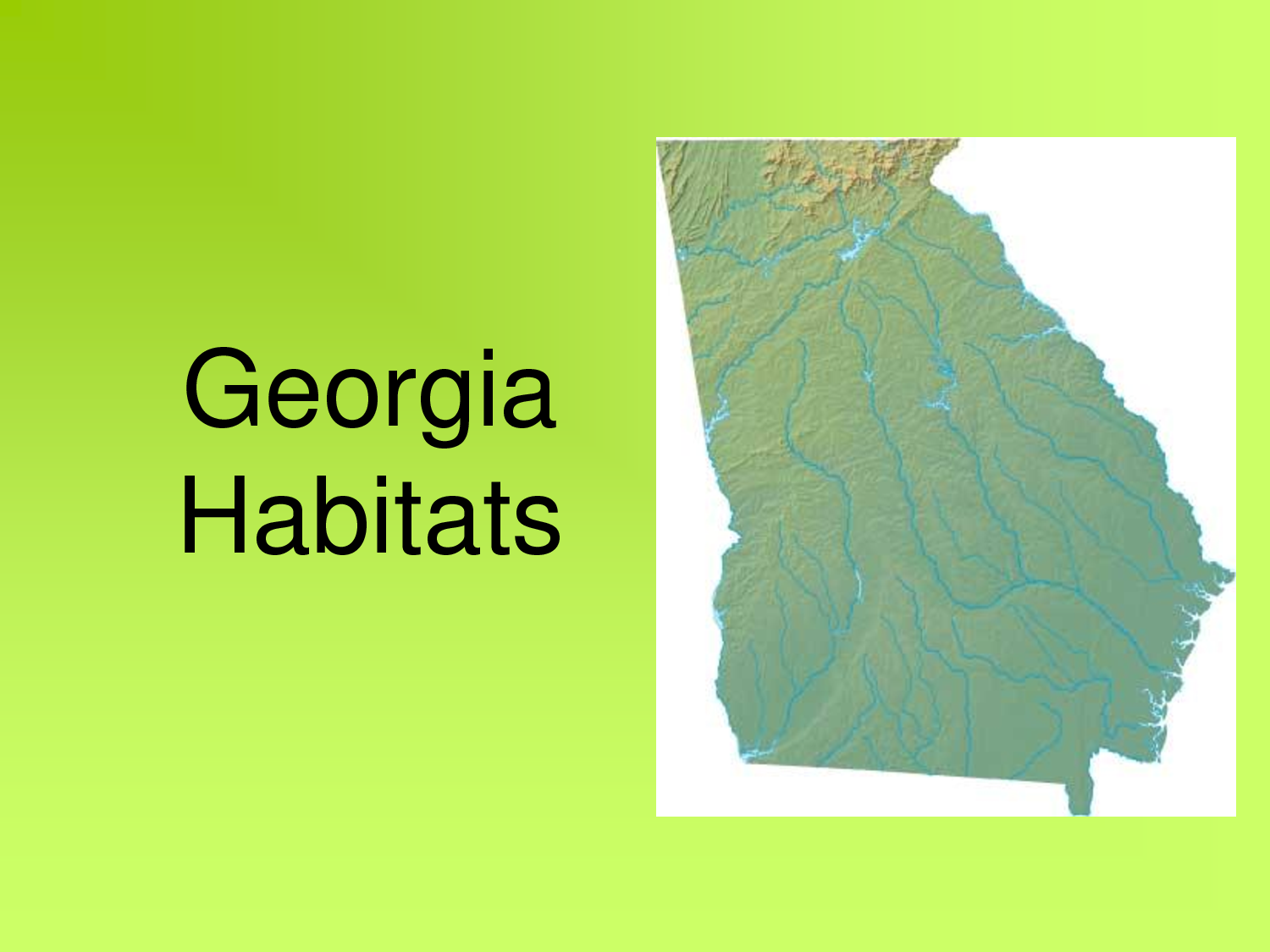STANDARD: S3L1. Students will investigate the habitats of different organisms and the dependence of organisms on their habitat.
a. Differentiate between habitats of Georgia (mountains, marsh/swamp, coast, Piedmont,
Atlantic Ocean) and the organisms that live there.
b. Identify features of green plants that allow them to live and thrive in different regions
of Georgia.
c. Identify features of animals that allow them to live and thrive in different regions of
Georgia.
d. Explain what will happen to an organism if the habitat is changed.

